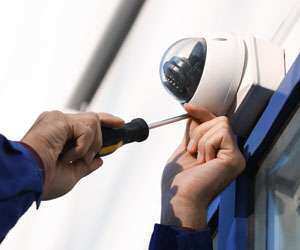The business benefits of Digital Transformation
Although a broad term, Digital Transformation is the process of your business going through the journey of changing its paper-based processes into...
![]() Facilities Management
Facilities Management
Manage maintenance requests & streamline operations
CMMS
CAFM
EHS
Regulatory Compliance
PPM
EAM
Operations Management
Transportation Management
![]() Food Safety
Food Safety
Prove compliance and ensure standards are up to customer expectations
![]() Retail Task Management
Retail Task Management
Enable your teams to focus on delivering quality and achieve their goals.
Task Creation & Automated Follow-up
Unified Reporting and Data Analysis
Regulatory and Audit Monitoring
Full visibility of every task
IoT
Take action on your data to get ahead
Integrations
Bring mpro5 into your other tools
Automated Workflows
Make your work effortless with automated workflows
Managed Service
Supporting your operations, every step of the way
NEWS & INSIGHTS
Blogs & news
NEWS & INSIGHTS
GET IN TOUCH
GET IN TOUCH
In my last article I talked about smart stations that use the Internet of Things (IoT) to improve the passenger experience, but this technology holds enormous potential to transform businesses in almost every sector. With the right planning and strategy, it can also be made extremely cost-effective.
In this article, we will look at five ways to keep your spend down and ensure a strong ROI so that you can get the most from your IoT implementation.
Your IoT strategy should focus on achieving specific goals that are directly beneficial to your operations. Your goals will also help determine your choice of hardware and network.
For example, eliminating manual temperature checks in coffee shops could save a barista over five hours per week, assuming a check takes place every hour and lasts for 5 minutes. Within this time, selling an extra four coffees per hour at £2.50 could generate £50 extra revenue and a healthy ROI on installing a temperature sensor. In contrast, noise level monitoring may be interesting, but can you build a strong use case for it with a realistic ROI?
Setting goals for IoT
The market is filled with variety, so try to find the sensors that meet your goals specifically. Sensors can often cost less if they measure fewer reading types. It’s worth asking yourself if you really need an air quality sensor that measures five different types of gas when you only need to measure CO2 levels.
Equally, if it is important for you to measure five types of gas, one sensor that measures all these types will be cheaper to buy, install and implement than a separate sensor for each gas.
The type of transmission technology the sensor uses will also be a key factor, which underlines the importance of a holistic strategy.
Connectivity is a key consideration in implementing IoT and the costs associated can be significant, so it is worth weighing up the different options.
WiFi provides high bandwidth and low latency that’s ideal for smart cameras streaming video. However, setting up a WiFi network for your sensors can be expensive due to the short range of transmission: you may need many hubs to cover a large area.
WiFi can be overkill if you’re working solely with devices reporting small and infrequent data packets such as half-hourly temperature readings.
Low Power Wide Area Networking (LPWAN) technologies are popular and often more affordable due to their long range, low power draw and relative design simplicity. This long range can enable monitoring in areas that would be otherwise problematic, such as underground spaces.
Cellular IoT LPWAN technologies (LTE-M and NB-IoT) have lower bandwidth and are optimised to minimise power draw. To provide coverage, network operators (such as O2 and Vodafone) simply upgrade the existing networking infrastructure that we use every day to connect our phones to 4G. Your sensors will be able to connect just as easily and without extra equipment.
There are other LPWAN options that don’t use cellular. LoRaWAN involves gateways that act similarly to WiFi Hubs, but the range between sensor and hub can be many kilometres. This is cost-effective and particularly relevant in areas without cellular coverage.
When choosing IoT devices, it’s worth choosing those where the rate at which the sensors sample and send data is suitable or (even better) is configurable. A rate that’s unnecessarily high can cause costs to quickly stack up due to increased power consumption, processing and storage requirements.
To combat this problem, you will have to consider the efficiency and use cases for your network: do you need to know every 10 seconds if a fridge is at the correct temperature? You might do if you transport or store pharmaceuticals, but every 15 minutes will probably be sufficient if you’re storing food.
Could edge processing be the answer?Edge processing could help you achieve a high sampling rate, but low cloud processing and storage costs. It works by performing some simple checks on the sensor data “at the edge” (on the IoT device itself) before the data is uploaded, such as discarding readings that don’t match the criteria for an alert, or only uploading video when something of note is in front of the camera.
This technology allows high frequency sampling, but can reduce the load on your network considerably, which translates into cost savings on your data.
 IoT implementation isn’t just about the direct hardware and software costs. The full cost of installation should be considered at the beginning of any IoT project. This can vary greatly, depending on the number and type of sensors as well as any additional network set-up required.
IoT implementation isn’t just about the direct hardware and software costs. The full cost of installation should be considered at the beginning of any IoT project. This can vary greatly, depending on the number and type of sensors as well as any additional network set-up required.
There are several questions to ask before you can estimate the likely cost:
Having chosen your devices and costed your implementation, it’s worth also evaluating your software options for alerting beyond their price tags. Without sufficient intelligence and alert suppression, your IoT tech may raise far more tickets and potentially cause more call outs than necessary. In turn, leading to knock-on costs.
It’s possible to set the right alerts based on your use case. For example, if your fridge sensors are reporting every minute and the reading is repeatedly high it doesn’t make sense to send a recurring alert to your platform every minute as a result. A software solution that tracks the status of the original ticket, can suppress any further tickets if you know someone hasn’t been able to respond to the original alert yet and only alert further if an escalation is required.
As previously mentioned, alert suppression can be aided by edge processing, but a smart, flexible platform should also have this capability as part of its core alerting and scheduling engine. You’ll want something that is easily configurable to take into account your operational processes and has the capacity to grow as your IoT network does too.
Choosing the right software platform can really maximise ROI on IoT projects. Visualising and aggregating your IoT data and correlating this with operational data can provide powerful insight. You can even choose a platform that to uses your IoT data to trigger remedial actions and jobs for your operational teams via an app.
Successful IoT implementations can help organisations reap vast benefits. However, with so many options available, it can be complicated to build a coherent IoT strategy. By focusing on clear goals and asking the right questions, it’s achievable to architect a solution that will fit – both your ambitious objectives and the budget.
Although a broad term, Digital Transformation is the process of your business going through the journey of changing its paper-based processes into...
mpro5 are pleased to be a gold sponsor of this year’s The Things Network Conference UK in reading. If you’re interested in attending an Internet of...

Heard the phrase ‘Internet of Things’ but not sure what it means? IoT integration underpins many of our business solutions. Read on for more.